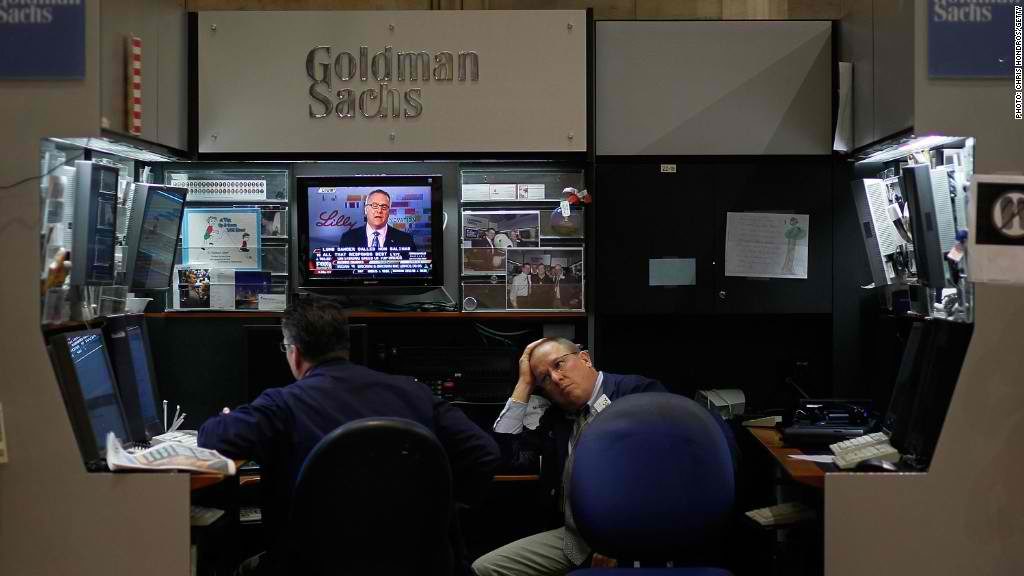
A computer model built by Goldman Sachs is signaling that a bear market is right around the corner, but some strategists at the investment bank are not listening to their own indicator.
Goldman Sachs’ bull/bear indicator is sitting above 70 percent. That level is “normally associated with high risks for equity investors,” Goldman’s Peter Oppenheimer, Sharon Bell, Lilia Peytavin and Guillaume Jaisson wrote in a note Monday.
The indicator takes into account five factors: growth momentum (measured by the average percentile for U.S. ISM indexes), the slope of the yield curve, core inflation, unemployment and stock valuations as measured by the Shiller price-earnings multiple.
However, the strategists are telling investors not to worry, noting that the indicator’s high level is mainly due to the low unemployment rate and strong economic growth momentum skewing the results rather than rising rates or strong core inflation.
“Low unemployment … and strong growth momentum at such an advanced stage in the economic cycle would normally already be associated with higher wages and, consequently, higher inflation and tighter monetary policy,” they said.
But “it is because of the lack of inflation that some of these variables can appear stretched without ringing alarm bells for equity investors. Put another way, it is very unlikely that without core inflation rising much, policy rates will rise sufficiently in the US or elsewhere to invert yield curves and/or force a recession in the near future,” the strategists said.
The U.S. unemployment rate sits at 4.1 percent, its lowest level since 2000. But the core PCE index — the Federal Reserve’s preferred measure of inflation — is still below the central bank’s 2 percent target.
“It is the fear of recession and falling profits that is the normal trigger of ‘cyclical’ bear markets which nearly always have their roots in tighter monetary policy,” according to Oppenheimer, Bell, Peytavin and Jaisson.
The Dow Jones industrial average closed in correction territory last week, down more than 10 percent from its 52-week high, while the S&P 500 and Nasdaq composite entered correction last month before recovering. A bear market is defined as a stock or index falling at least 20 percent from its one-year high.